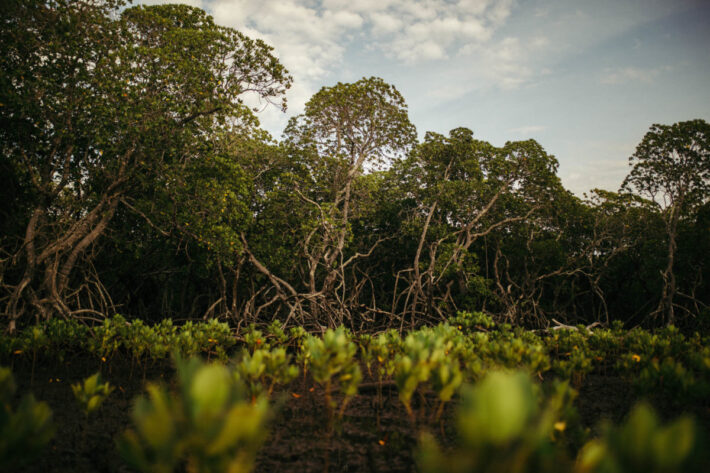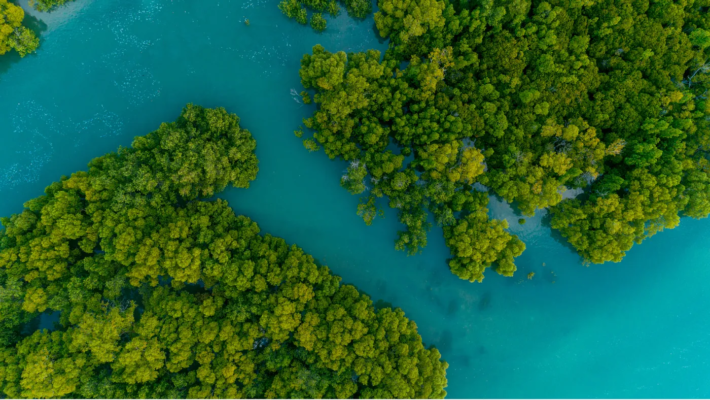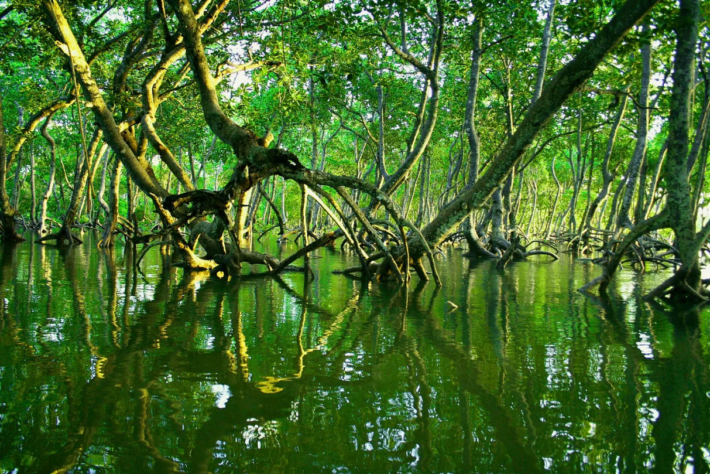Nurturing Nature’s Guardians: A Guide to Mangrove Reforestation (Part 1) — Site Selection

Introduction
Mangroves, often called “nature’s guardians of the coast” or “rainforests of the sea,” are remarkable ecosystems that straddle the boundary between land and sea, providing a myriad of ecological and socio-economic benefits. Yet, these coastal havens face threats like deforestation, pollution, and climate change-induced sea-level rise. To safeguard and rejuvenate these vital ecosystems, mangrove reforestation initiatives are crucial. In this multipart series, we embark on a journey to understand the intricacies of mangrove reforestation. We’ll begin with a close look at “site selection,” the first step in the process. Selecting the right location for planting sets the foundation for successful mangrove restoration efforts. Join us as we explore how the thoughtful choice of site influences the health and prosperity of these coastal wonders.
The Significance of Site Selection
Site selection is the foundation upon which a successful mangrove reforestation project is built. Choosing the right location ensures that the mangroves have the best chance of thriving, establishing themselves, and providing the numerous benefits they offer to both the environment and local communities. Here are some key reasons why site selection is of paramount importance:
Salinity Levels
One of the primary factors to consider when selecting a site for mangrove reforestation is salinity levels. Mangrove species have varying degrees of tolerance to salinity, and each species has its preferred range. Red mangroves (Rhizophora), for instance, are highly salt-tolerant and thrive in areas with high salinity levels, often closest to the sea. In contrast, white mangroves (Laguncularia) prefer areas with lower salinity levels and are typically found at higher elevations within the mangrove ecosystem.
Selecting a site with salinity levels that align with the preferences of the target mangrove species is crucial for their survival and growth. Planting in areas with excessively high salinity can lead to salt stress and hinder the development of young mangrove plants.
Tidal Patterns
Mangroves are uniquely adapted to thrive in the intertidal zone, where they are regularly exposed to tidal inundation. Understanding the local tidal patterns is essential for site selection. Mangroves rely on tidal flows to provide nutrients, disperse seeds, and maintain the balance between saltwater and freshwater.
Choosing a site with appropriate tidal rhythms ensures that mangroves will experience the natural ebb and flow of tides. This regular inundation is vital for their health and allows them to filter out excess salt from their root systems.
Soil Conditions
The quality of the soil at the reforestation site is another critical factor. Mangroves typically grow in waterlogged, muddy soils with poor oxygen penetration. Proper soil assessment is necessary to determine if the soil texture and drainage are suitable for mangrove growth.
Elevation and Topography
The elevation of the planting site within the mangrove ecosystem is also a vital consideration. Different mangrove species are adapted to grow at varying elevations, with some thriving closer to the shoreline and others at higher elevations.
Red mangroves, for example, are often found in the lower intertidal zone closest to the sea, while white mangroves occupy slightly higher elevations. Selecting the appropriate elevation for planting ensures that the mangroves are in their preferred habitat, optimizing their chances of survival.
Local Biodiversity
Site selection should also take into account the existing biodiversity of the area. Mangrove ecosystems are rich in flora and fauna, and reforestation efforts should aim to enhance or maintain this diversity.
Consider how the newly planted mangroves will interact with the surrounding ecosystem, including resident wildlife and other plant species. Choose sites that support a healthy and diverse mangrove community.
Key Considerations in Site Selection
Now that we’ve explored the significance of site selection let’s dive into some of the key considerations when choosing a location for mangrove reforestation:
Ecological Goals
Determine the primary ecological objectives of your reforestation project. Are you aiming to restore habitat for specific wildlife species, enhance coastal protection, or sequester carbon? Your goals will influence the type of site you select and the mangrove species you plant.
Local Climate
Consider the local climate and weather patterns in your region. Factors such as rainfall, temperature, and storm frequency can influence the suitability of a site for mangrove reforestation. Ensure that your chosen site aligns with the prevailing climatic conditions.
Community Engagement
Engage with local communities and stakeholders when selecting a site. Their input and knowledge of the area can be invaluable. Additionally, involving local communities in the decision-making process fosters a sense of ownership and stewardship over the reforestation project.
Regulatory Compliance
Ensuring a chosen site complies with local and national regulations is essential for success. Some regions may have special protections and procedures in place and permits or approvals may be required before reforestation efforts begin.
Monitoring and Adaptation
Establishing a system for monitoring the site after planting is the final consideration but no less important than the others. Regular assessment of the growth and health of the mangroves is a necessary component of any successful reforestation project. Being prepared to adapt your approach based on ongoing assessments and changing environmental conditions is key when making contributions to restore a dynamic planet.
Site Selection Conclusion
In the world of mangrove reforestation, selecting the right site is not just the first step; it is the cornerstone upon which the entire conservation effort is built. As we conclude this exploration of site selection in Part 1 of our series on mangrove reforestation, we emphasize the profound significance of this process.
Mangroves, with their intricate root systems and remarkable adaptability, offer essential ecological, economic, and social benefits to coastal communities and the planet at large. Yet, these invaluable ecosystems face numerous challenges, from deforestation to climate change, threatening their very existence.
By meticulously assessing factors such as salinity levels, tidal patterns, soil conditions, elevation, and local biodiversity, we pave the way for the successful restoration of mangroves. The careful selection of reforestation sites ensures that these coastal wonders have the best chance to flourish, thrive, and fulfill their vital roles in our ecosystem.
As we continue our journey in this multipart series, we will delve deeper into the intricacies of mangrove reforestation, exploring topics such as species selection, propagation methods, planting techniques, community engagement, and long-term planning. Each facet of this conservation effort plays a pivotal role in nurturing nature’s guardians of the coast, allowing these remarkable ecosystems to not only survive but also flourish in the face of adversity.
Brian Maisenbacher is VP of Sustainability and Co-Founder of Restore, a nature-tech company on a mission to safeguard and regenerate the natural world. Follow Restore’s journey to restore the earth here, across all social channels and our home Restore.tech




